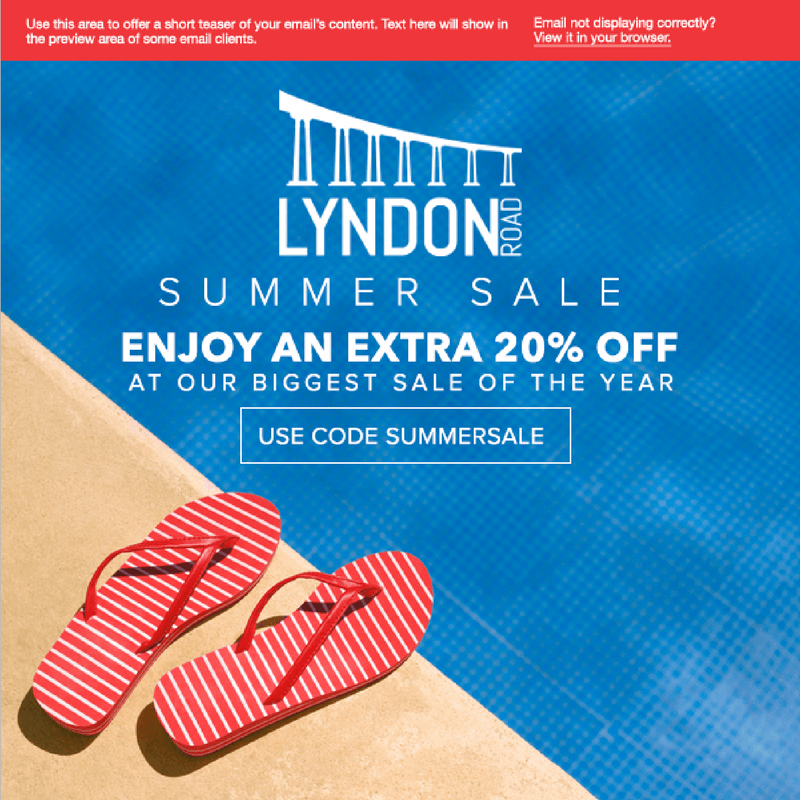Having the knowledge of your customers’ eCommerce purchase history can be a powerful marketing tool. It gives you insights into what they like, other products they might be interested in, and possibly even future purchase schedules.
When you put this information to work, you can not only increase sales, but show your customers that you’re paying attention to their preferences and needs. Customer purchase history is a solid foundation to build a relationship on with your customers.
Once you’ve built that relationship, you can create loyal customers, and loyal customers are more likely to repurchase and recommend. According to Experience Matters, providing great service and building a solid relationship with customers can encourage up to 86% of customers to repurchase, and 77% to recommend.
So let’s look at a few ways you can make this happen for your eCommerce business.
Repeat and add-on recommendations from eCommerce purchase history
Knowing which products customers have purchased in the past can tell you a lot about what they like, and there’s a chance they may want to buy those items again in the future. Whether it’s because something is short-term or perishable, or could make a great gift, reminding customers via email that you remember their past purchases can spark interest in buying again.
Often times, an item doesn’t exist in a vacuum. There is typically another item, or multiple ones, that complement or work in tandem with something a customer purchased. Think about any time you’ve been on Amazon shopping. There is almost always a section below the item you’re browsing that tells you items frequently bought together with that item, and products customers who viewed that item also purchased.
Below is an email I received after purchasing some podcasting equipment. Amazon recommended some microphone arms, and even a guitar (a good guess, though I’m definitely not musically inclined) based on the fact that I purchased microphones.
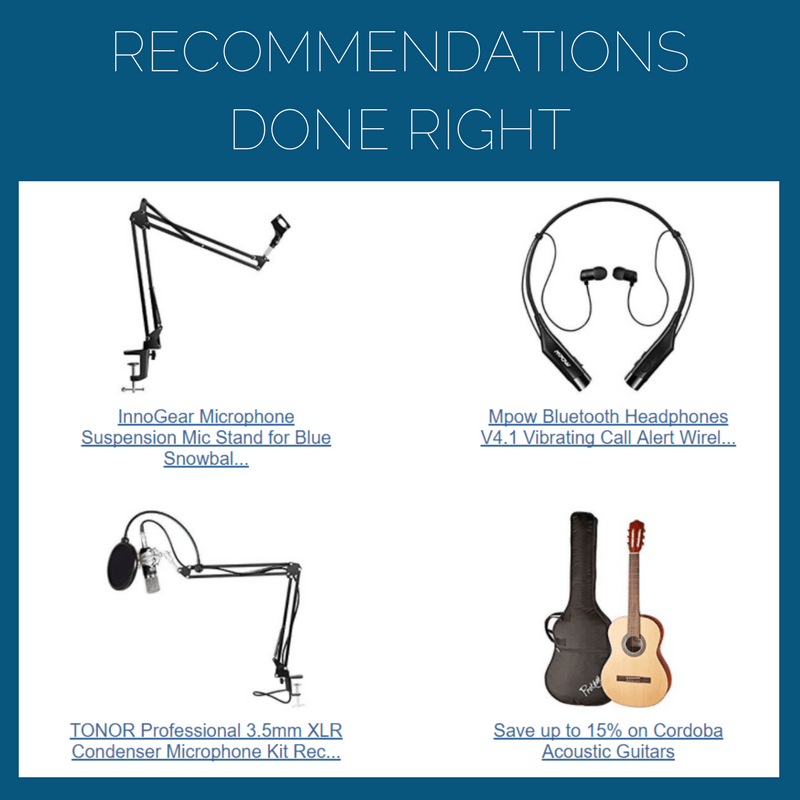
Both repeat and add-on email campaigns can easily be done in the ShippingEasy app by segmenting your customer list based on specific SKUs purchased within a certain time frame. Here’s how to do it:
- Click your Customers tab at the top of your ShippingEasy dashboard
- To the left, you’ll see many options for filtering your customer list—the eighth option down is “Purchased SKUs”, which can be used to enter specific product SKUs and will allow you to create lists of those who’ve purchased those products
- If you want to set a time frame (say, the past year), use the “Order date” section below “Purchased SKUs” to set limits
- Click the box beside “Name” in your customer list to select all names (you’ll see the option to include all names beyond what’s visible on that screen)
- In the top menu, you’ll see “Manage Lists”, which will allow you to add these names to a pre-existing list or create a new one
- Repeat this as many times an necessary to add multiple segments or SKUs to the same list or different lists
- Now, when you create a campaign in the Campaigns drop down, this/these lists will be available to send emails to
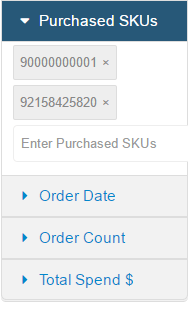
Put together a list of complementary items based on your experience, or even other customers’ purchasing habits, and watch the repeat purchases roll in from your campaign.
Predicting future purchases using eCommerce purchase history
If you’re on Facebook or use an app like TimeHop, you know the power of nostalgia. There’s a reason Facebook takes the time to remind you what you posted around this time last year, or five years ago—it encourages more sharing. The same can be done with shopping.
This can be an especially powerful reminder around holidays. If you look at customer shopping habits a few weeks before Mother’s Day or Father’s Day, you might be able to garner information about those purchases, and use that to remind customers not to forget about dear ol’ mom and dad.
Giving customers the option to mark items as gifts can make this especially successful, as you can send a simple, “You picked up [insert item] as a gift around this time last year. Need to pick up another one, or something else?” You could turn out to be a lifesaver by reminding them to pick up a gift for someone!
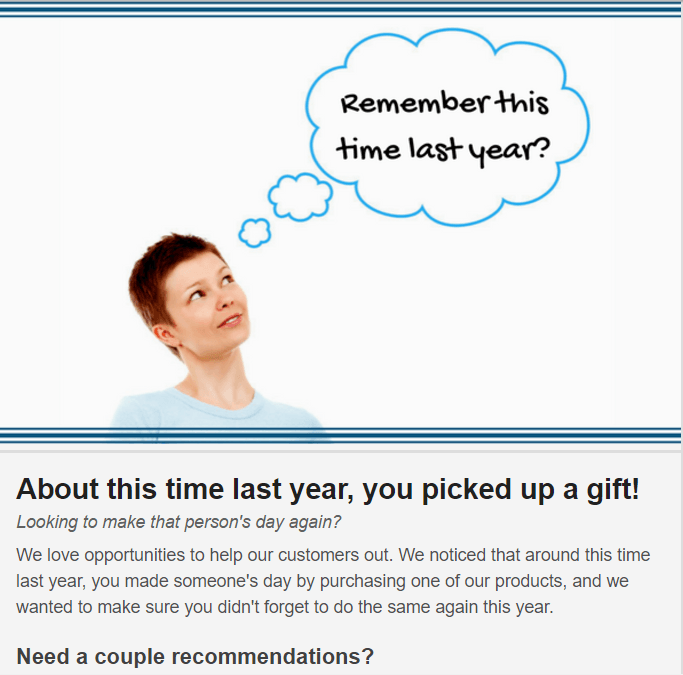
To do this in the ShippingEasy app, you’ll go to the aforementioned filters in the left column of your “All Customers” list. In this case, we’ll just filter by a specific date range to outline the time frame you want to target for a promotion. Follow the same steps above to create a customer list and voila!
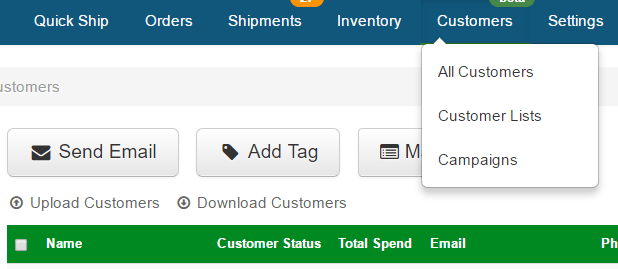
Creating a loyalty program from eCommerce purchase history
When you have your complete customer history at your fingertips, it’s easy to find out who your most loyal customers are, as well as those who spend the most money, and those who have been with you the longest. This kind of information can be crucial when launching a loyalty program. These people are most likely to become advocates for your brand, and will likely require the least amount of incentive to spread the word.
Right now, Millennials are one of the generations with the strongest buying power, and 59% of them say they’re swayed by friends’ opinions, more than any other age group. On top of that, 28% say they won’t even try a product their friends don’t approve of, according to recent data from Extole.
In the ShippingEasy app, you can use the bottom three segmenting options separately to narrow down customer segments by when they ordered, how many items they’ve ordered, and how much they’ve spent. As you create each individual segment, you can add them all to a Loyalty Campaign list, or set up separate lists to target your email language to each segment (i.e. focusing an email on the fact that they’ve been a long time customer or they’ve been a top spending customer vs. sending the same email to all those you want to invite to a loyalty program).
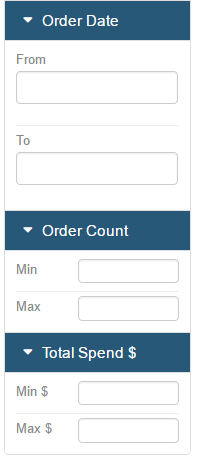
These are just a few of the ways you can create value and revenue by managing your customer relationships using their eCommerce purchase history. And ShippingEasy’s Customer Management allows you to do that, as well as manage your shipping and inventory, all in one place. Below is another example using our customizable email templates. Click or tap to see the full email example.
What are some other ways you’d make the most of your customers’ purchase histories? Chime in on Twitter and tell us!
Rob Zaleski
Latest posts by Rob Zaleski (see all)
- USPS 2023 Shipping Rate Changes - November 16, 2023

